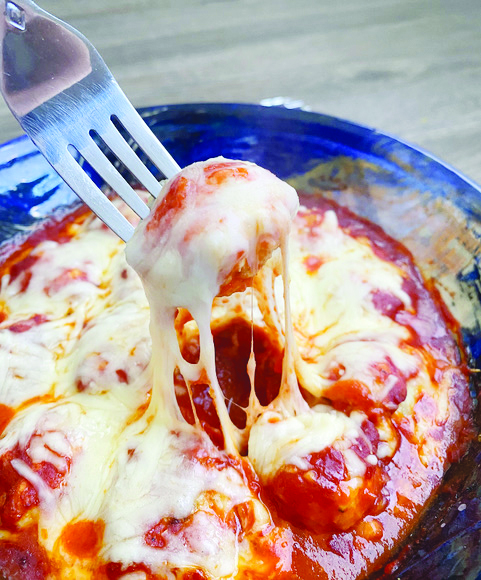Nite Skye, Vanishing (Sonic Ritual Records)
I’m like 100 percent positive I’ve talked about this father-son duo before, unless it was someone else. This is their debut album, which doesn’t jibe with my (probably faux) memory, but anyway, here they are, ex-Film School vocalist-guitarist Nyles Lannon and his 12-year-old boy Skye on the drum kit, stomping out the shoegaze/dream-pop vibes. You may have heard of Film School but I haven’t; they were a shoegaze act back in the day, so Nyles is a good dad for Skye to have picked, no question. Some very listenable stuff, particularly if your outdated tastes run to Tangerine Dream sans any krautrock elements, which is what album opener “Dream State” is about. “Guided By A Hand” is even more ’80s-ish, like Raveonettes without all the annoying performative noise. “Doing Time” finally brings us to the shoegaze subject that the record was supposed to be about in the first place; it’s not a wildly original tune but like everything else here it’s got plenty going for it. A
Charming Disaster, Super Natural History (Sonic Ritual Records)
This year’s full-length entry from the Brooklyn, N.Y.-based goth-folk duo, with Ellia Bisker on ukulele and Jeff Morris on guitar. I liked their 2022 record, Our Lady of Radium, a concept album focused on Marie Curie’s ghost, and that’s how they remain here, inspired by the gothic humor of Edward Gorey and Tim Burton, the noir storytelling of Raymond Chandler, traditional murder ballads and old-time cabaret. I like that these two really take their trip seriously; they’re releasing an “oracle deck” of cards similar to a tarot deck, which is brilliant strategy when you’re singing about monsters and ghosts like they do here again, although they have more musicians helping this time around, which makes for a more Built To Spill- or Lou Reed-style vibe, all told, more of a lo-fi post-punk thing. It’s goth-con stuff of course; they’ve opened for such good fits as Dresden Dolls and Rasputina. Nothing wrong here. A
Playlist
• Our next general CD-release date is this Friday, Feb. 24, as the awful winter starts running out of gas forever. LOL, remember when we thought January was just going to be an early spring and some of you were walking around in cargo shorts, remember that? And then it was a frozen ice storm the week of the 24th, and each shovelful of slush weighed 80 pounds? I can’t wait for that to be over, but in the meantime, there are albums we need to discuss, and we’ll start with the one that needs the least introductory verbiage, Adam Lambert’s new album High Drama, heading our way this very minute! Lambert is of course the Star Search version of Freddie Mercury in the current lineup of the classic rock band Queen, sort of; he has to share the singing duties with Paul Rodgers, who sang for Bad Company before they started putting out decent tunes like “No Smoke Without A Fire,” the only “Bad Co” song I like. Where were we, right, so Lambert is considered by many non-singing producers and non-singing musicians to be one of the best singers in the world, and I refuse to get trolled into an argument about that, so let’s have a listen to what’s on the new album, his first since 2020’s Velvet, which gave us “Feel Something,” a crooner ballad that’s so antiseptic that it sounded as if it had to get approval from some random Today show audience before it was released to the five people who actually bought the album. I’m hoping to hear a little originality in his new single, which is — wait, it’s a cover song, “Holding Out for a Hero,” that old Bonnie Tyler tune. He sings good, of course, and he dressed his band in Daft Punk helmets for some reason, maybe just so he’d have a reason to use a Daft Punk-y beat on a song from Footloose that should have been forgotten in 1985. But do have at it, whoever buys this dude’s albums.
• Radiohead drummer Philip Selway releases a new album on Friday, titled Strange Dance. That’s the only neutral thing I have to say on the matter, given that I can’t stand Radiohead, but I’ll give him the benefit of the doubt and do the dance anyway with this thing, because I am a professional at this. The single, “Check For Signs Of Life,” starts off with a slow, rainy, melancholy acoustic piano line — good lord this guy has an awful voice — and leads me to think that he had Zero 7 or maybe Portishead in mind when he wrote this song, and then it slowly becomes a ripoff of David Bowie’s “Space Oddity” but more upbeat (what isn’t?). Anyway, no idea why anyone would want to make an album with this song on it, but voila.
• English singer and bass player Gina Birch founded post-punk rock band The Raincoats in 1977, right after she saw a Slits concert (today I learned that The Slits have been around since forever, how about that). Her new solo album, I Play My Bass Loud, is on the way this Friday. The title track is interesting and survivable enough, fitted with a subterranean, urban groove, some agreeable ’80s-ish art rock, and a weird, mocking vocal line from Birch that’s all doused in patch effects and that kind of thing. It’s not hard stuff like The Slits, if you’re wondering, but it’s still no-wave in my book, and besides, I doubt she’s shooting for actual punk these days anyway.
• And finally we have Gorillaz, a cartoon band whose appeal never struck me, not that I feel guilty about it. Cracker Island is the band’s new album, and the title track has a pretty neat electro beat, kind of goth-krautrock-buzzy, to be more specific. I’ve heard worse.
If you’re in a local band, now’s a great time to let me know about your EP, your single, whatever’s on your mind. Let me know how you’re holding yourself together without being able to play shows or jam with your homies. Send a recipe for keema matar. Message me on Twitter (@esaeger) or Facebook (eric.saeger.9).






